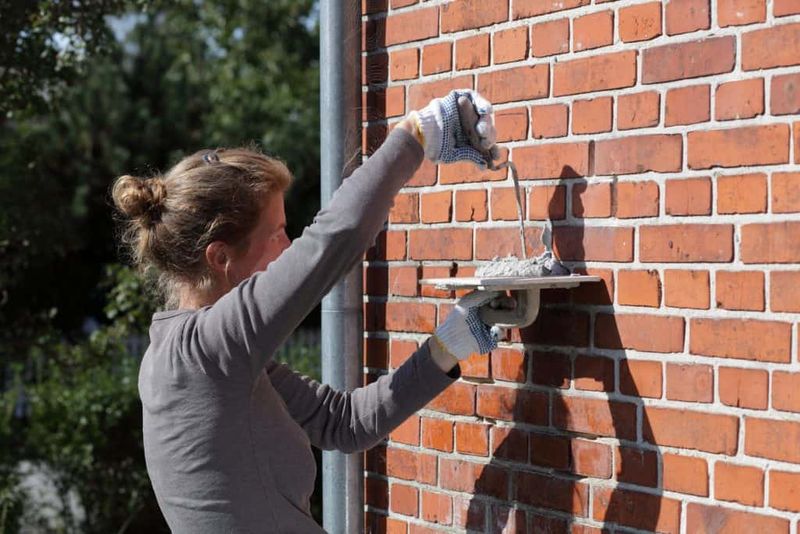Rebuilding Trust After Betrayal: A Step-By-Step Guide For Women Over 40
Rebuilding trust after betrayal is one of the most challenging journeys a woman over 40 may undertake. With decades of life experience, this journey isn’t about rushing to forget or forgive but about building something genuine and solid, layer by layer.
This guide offers 20 insightful steps to navigate through the turbulence of emotions and decisions, helping you determine whether to mend the relationship or move forward independently. Each step is crafted to address the emotional, psychological, and practical aspects of healing.
1. How To Rebuild Something Real—Brick by Brick

Building trust is akin to constructing a wall—each brick represents a moment of honesty, an act of integrity, or a gesture of reliability. It’s vital to lay these bricks with patience, ensuring that the foundation is strong enough to support the structure. Trust is not restored overnight; it requires dedication and consistent effort from both parties.
In this journey, every small promise kept adds to the solidity of the trust wall. Like any construction project, it’s important to ensure that corners are not cut and that each layer is allowed to set before adding the next. This process can be laborious but rewarding, as each brick laid brings you closer to a fortress of trust.
By focusing on rebuilding carefully, you create something enduring and meaningful, reflecting a commitment to genuine reconciliation and understanding. This approach ensures that the trust you rebuild stands the test of time, weathering future storms.
2. Let yourself feel angry—and stay there as long as needed

Anger is a natural response to betrayal, a fire that burns away illusions and reveals what truly matters. Allowing yourself to feel this emotion fully can be both cathartic and empowering. It’s not about dwelling on the hurt, but about acknowledging that something significant has been lost.
Many women try to suppress their anger, fearing it might consume them, but it is essential to grant yourself permission to experience it. This emotion, if explored healthily, can offer clarity and insight into your feelings and desires.
Staying with your anger means respecting your emotional process and understanding its roots. This journey through fire can illuminate the path forward, helping you to confront truths and make informed decisions about your future. Embrace this part of the healing process without rushing to move on or cover it with false positivity.
3. Don’t rush forgiveness just to feel “okay” again

Forgiveness is often portrayed as a necessary step to healing, but rushing it can lead to superficial reconciliation without addressing the core issues. It’s important to understand that forgiveness is a personal journey, not a deadline to meet in order to placate others or yourself.
This step involves examining what forgiveness means to you and whether it is truly the path you wish to take. It requires introspection and time, allowing you to process the betrayal and its impact on your life.
Attempting to forgive too soon may lead to unresolved emotions that resurface later. Instead, focus on healing at your own pace, respecting that forgiveness, if and when it comes, should feel genuine and not forced. This approach ensures that any forgiveness offered is sincere and leads to real peace of mind.
4. Ask yourself: do you want to rebuild this, or start new?

In the aftermath of betrayal, it’s crucial to determine whether the relationship is worth salvaging. This decision requires deep reflection on the relationship’s value and potential for change. Consider whether the foundation can be repaired or if starting anew would better serve your well-being.
This step involves weighing the pros and cons, examining past patterns, and envisioning your future. It’s about understanding that both choices require courage: rebuilding demands resilience, while starting new demands bravery in the unknown.
Take the time to assess what you truly want and need, free from external pressures or expectations. Making this decision with clarity ensures that your next steps are aligned with your true desires and values, paving the way for genuine healing and growth, regardless of the path you choose.
5. Stop downplaying what happened

The tendency to minimize betrayal’s impact is a defense mechanism to protect oneself from pain. However, true healing requires acknowledging the gravity of what happened. This step is about facing the full reality of the situation without sugarcoating or denial.
Confronting this truth is empowering, as it liberates you from underestimating your feelings and encourages you to validate your experiences. By recognizing the betrayal’s significance, you pave the way for honest dialogues and informed decisions.
This process demands self-respect and courage, allowing you to rebuild your life based on authenticity and self-awareness. Embrace the truth as a powerful ally in your journey, one that lays the groundwork for genuine trust and personal growth in the future.
6. Get honest about your dealbreakers now

Knowing your dealbreakers forms the backbone of a healthy relationship. This step is about identifying and vocalizing what you cannot compromise on in the future. These boundaries define the respect and integrity you expect and deserve.
Writing them down gives clarity and strength to your expectations, ensuring they are not forgotten or overlooked. This process is not just about protecting yourself, but about establishing a framework for any future relationship to thrive.
By understanding and honoring your dealbreakers, you empower yourself to engage in relationships grounded in mutual respect and understanding. This clarity aids in making decisions that support your emotional and psychological well-being, guiding you in maintaining healthy connections.
7. Talk with someone outside the chaos—preferably a pro

Seeking professional help provides an outside perspective that is indispensable in times of emotional upheaval. A therapist or counselor can guide you through the tangled emotions and help you navigate the complexities of betrayal.
This safe space allows you to express thoughts and feelings without judgment, offering clarity and new insights into your situation. An expert can provide coping strategies and tools to manage stress and emotional turmoil effectively.
Engaging with a professional ensures that you are not alone on this journey, helping you develop resilience and a deeper understanding of your needs and goals. They offer a reassuring presence, aiding you in rebuilding trust with guidance and compassion.
8. Expect emotional whiplash—it’s part of it

Emotional whiplash is an inevitable part of the healing process, characterized by sudden shifts in feelings and moods. Understanding this phenomenon helps in navigating the unpredictability of emotions following betrayal.
These swings are natural and should not be feared or suppressed. Instead, recognizing them as part of the journey allows you to ride the waves of emotion with greater ease and understanding.
Acknowledging this allows for a more compassionate approach toward yourself, reducing self-criticism and anxiety. Embrace this as an opportunity to explore the depth of your emotions and learn more about your inner strength and capacity for healing.
9. Don’t let their comfort come before your clarity

In the aftermath of betrayal, it’s easy to prioritize the other person’s comfort to ease tension. However, clarity about your feelings and needs should come first. Ensuring your emotional clarity is essential to moving forward in a healthy and empowered way.
This step involves setting boundaries and communicating your needs honestly, without being swayed by guilt or the desire to avoid conflict. Prioritizing your clarity ensures that your decisions are truly reflective of your heart and mind.
Remember, your journey toward healing and understanding takes precedence. By maintaining focus on your clarity, you create space for genuine healing and empowerment, leading to more authentic and balanced relationships.
10. Watch what they do, not what they say

Actions speak louder than words, especially when it comes to rebuilding trust. This step emphasizes observing behaviors rather than being swayed by promises or apologies. The consistency between words and actions is crucial in assessing sincerity.
Actions reveal true intentions and commitment, providing a more reliable gauge of whether trust can be restored. This approach requires patience and attentiveness, focusing on the tangible changes rather than verbal assurances.
By relying on observable behaviors, you protect yourself from false hopes and ensure that your journey toward rebuilding trust is grounded in reality. This vigilance empowers you to make informed decisions about the relationship’s future, fostering a more secure and trusting environment.
11. Set boundaries and protect them like your peace depends on it

Boundaries are essential for maintaining personal peace and wellbeing, especially after betrayal. Establishing and protecting these boundaries ensures that your emotional and psychological health remains a priority.
This involves clearly defining your limits and communicating them assertively to others. Standing firm in your boundaries is an act of self-respect and self-care, reinforcing your commitment to healing and personal growth.
Protecting these boundaries requires vigilance and courage, as it may challenge existing dynamics and expectations. However, this steadfastness is crucial in preserving your peace and fostering healthier relationships based on mutual respect and understanding.
12. Take control of your story again

Reclaiming your narrative is a powerful step in the healing process. It involves reframing your experience and taking ownership of your journey, rather than letting betrayal define your story.
This step empowers you to focus on personal growth, exploring the lessons learned and how they have shaped you. By conscious reframing, you transform your narrative into one of resilience and strength.
Taking control of your story encourages a proactive approach to healing, fostering a sense of agency and empowerment. It allows you to view yourself as the protagonist of your life, capable of guiding its direction and reclaiming your sense of self.
13. Choose transparency over constant checking

Trust rebuilt on transparency is more enduring than that maintained through constant surveillance. This step encourages fostering open communication instead of succumbing to the compulsion to monitor every action.
Transparency involves creating an environment where honesty and openness are valued. This approach builds mutual respect and trust, reducing anxiety and suspicion.
By choosing transparency, you prioritize a relationship dynamic that empowers both partners to engage authentically. This foundation supports sustainable trust, ultimately leading to a more fulfilling and harmonious connection.
14. Make room for vulnerability—but don’t hand it over too fast

Vulnerability is an essential component of trust-building, yet it requires careful consideration. This step involves allowing space for vulnerability while ensuring it’s shared with discernment.
Opening your heart too quickly can lead to further hurt, so it’s important to pace yourself and evaluate the relationship’s progress. Sharing your vulnerabilities should be a gradual process, reflecting the trust being rebuilt.
Balancing openness with caution allows you to protect your emotional well-being while fostering intimacy. This approach nurtures a relationship where vulnerability is respected and reciprocated, paving the way for deeper connections.
15. Let go of trying to “understand why” and focus on what now

Obsessing over the reasons for betrayal can keep you trapped in the past. This step encourages shifting focus from the ‘why’ to the ‘what now,’ empowering you to move forward.
Understanding every motive may be impossible, but deciding what to do next is within your control. This mindset fosters resilience, allowing you to concentrate on actionable steps toward healing and future happiness.
By releasing the need to understand why, you open yourself to new possibilities and solutions, embracing change and growth. This shift in perspective is liberating, providing clarity and direction on your journey to rebuild trust.
16. Rebuild your relationship with yourself first

Before rebuilding trust with others, it’s crucial to fortify the relationship you share with yourself. Nurturing self-love and self-respect lays the foundation for healthier relationships.
This step involves engaging in self-care practices and activities that promote inner peace and confidence. By prioritizing your well-being, you reinforce your value and capability to thrive independently.
Strengthening your self-relationship empowers you to approach external relationships from a place of wholeness and strength. This internal harmony enhances your ability to trust others, as you become more attuned to your needs and boundaries.
17. Don’t confuse guilt-driven gestures with real change

Distinguishing between guilt-driven gestures and genuine change is crucial in assessing a partner’s commitment to rebuilding trust. This step involves keen observation and reflection on whether actions stem from guilt or a desire for authentic transformation.
Guilt-driven gestures may offer temporary relief but lack the substance needed for lasting trust. Real change, however, is evidenced by consistent actions and efforts to address the root causes of betrayal.
By focusing on genuine change, you ensure that the relationship evolves in a meaningful way, fostering trust that is based on reality rather than illusion. This discernment is essential for building a solid foundation for the future.
18. Define what trust looks like—then say it out loud

Articulating your vision of trust is a powerful step in the rebuilding process. This involves defining what trust means to you and clearly communicating these expectations to your partner.
By expressing your vision, you lay the groundwork for a mutual understanding and shared goals. This transparency ensures that both parties are aligned in their efforts to rebuild trust.
Vocalizing your definition allows for open dialogue and collaboration, fostering a relationship where trust is actively nurtured and respected. This clarity paves the way for a more supportive and harmonious connection, grounded in mutual respect and shared values.
19. Give yourself full permission to leave, even while you stay

Granting yourself the freedom to leave, even as you choose to stay, is a powerful affirmation of your autonomy. This step involves recognizing that staying is a choice, not an obligation, and that you hold the power to change your path at any time.
This mindset fosters a sense of empowerment and self-determination, reminding you that your choices are based on your desires and well-being. It encourages you to stay for the right reasons, rather than out of fear or pressure.
By embracing this freedom, you reinforce your ability to make decisions that align with your values and needs, ensuring that your path is chosen with intention and clarity. This empowerment is key to maintaining agency and integrity in your journey.
20. Don’t numb the pain—work through it

Numbing the pain of betrayal might offer temporary relief, but it hinders genuine healing. This step encourages facing the pain head-on, allowing yourself to feel and process emotions fully.
Working through pain involves acknowledging its presence and exploring its impact on your life. This honest engagement with your emotions is crucial for healing, fostering resilience and growth.
By choosing to confront rather than escape your pain, you build emotional strength and prepare yourself for a future free from the shadows of past hurts. This courageous act of self-exploration is essential for rebuilding trust and achieving lasting peace.







